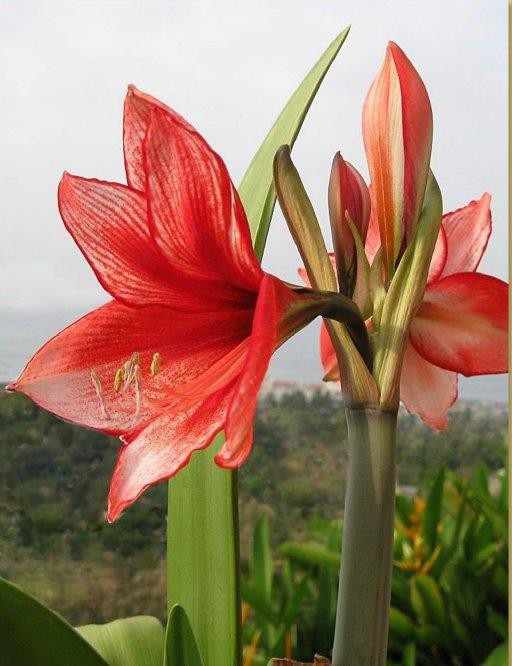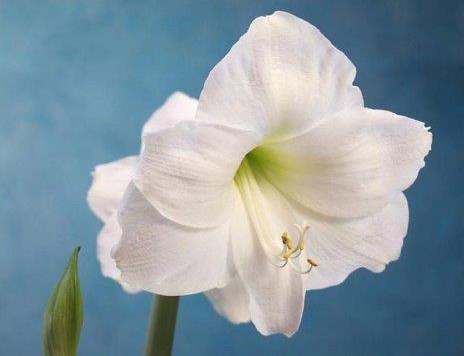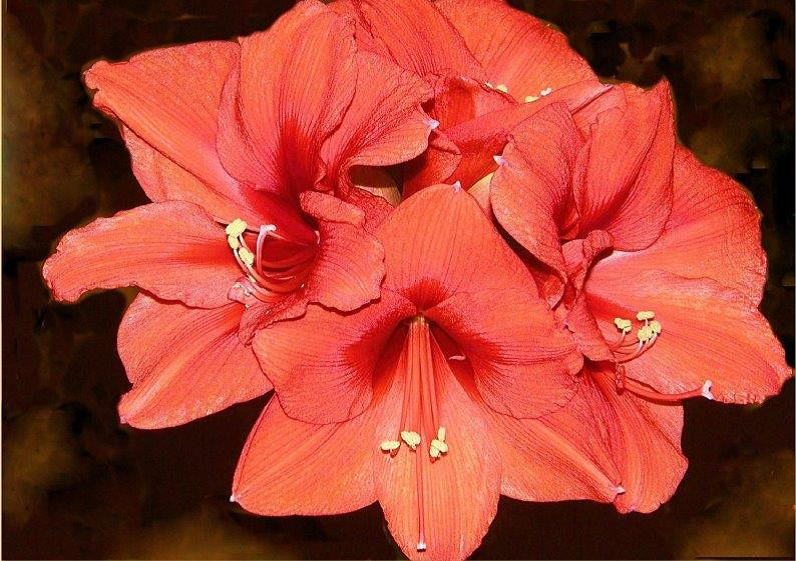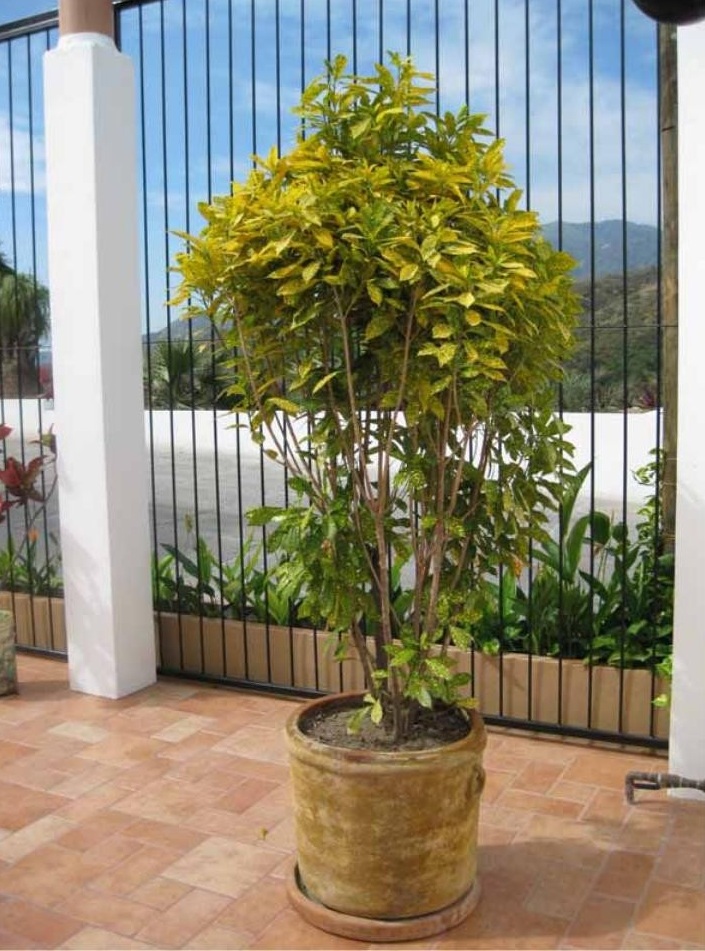By Tommy Clarkson from the November 2017 Edition
Amaryllis Amaryllis belladonna
Family: Amaryllidaceae
Also known as: Belladonna Lily, Jersey Lily, Naked Lady, Amarillo or March
The Amaryllis has only one species in its genus. All those we see around the holidays called ‘Amaryllis’ are actually Hippeastrum. There has long been confusion in the botanical community regarding the Amaryllis and Hippeastrum. Plants of the latter are an entire South American genus of which there are about 90 species and over 600 hybrids.
Additionally, this is one of numerous genera with the common name “lily” due to its flower shape and growth habit. However, the Amaryllis is only distantly related to the true lily. But, they are tenaciously long livers (as opposed to a short spleen, I sup-pose) with a single bulb living up to 75 years.
Per Greek myth, the Amaryllis is named for a shepherdess who struggled with unrequited love for Alteo, a gardener. (This story can’t be all bad then!) For a month, striving to impress him, she is said to have strolled the path past his door, piercing her heart with a golden arrow each time she passed. (Love must have been a bit more extreme in those days!) The blood which flowed from her breast, purportedly, created the beautiful flowers that bloomed in hues of scarlet along the pathway.

atop tall, straight stems.
(Trivia time: It’s sometimes called The Jersey Lily as a result of a painting of the beautiful, late 19th century English actress, Lily Langtry, holding the flower, entitled ‘A Jersey Lily’ as she was from the Isle of Jersey in the English Channel.)
With its large, lily-like, trumpet-shaped blooms atop tall, straight stems, it does look exotically tropical. This beauty grows green, leafy growth in the spring which give way to several thin, but strong, stems. Each of these has a cluster of buds from whence come pink blossoms on slender stocks through-out the summer months. These pink blossoms have a delightful, sweet fragrance. Their name, somewhat obviously, arises from the fact that they bloom on leafless stalks.
Warmth is needed for blooming with the ideal temperature being 68° to 70° F (20°-21.11° C). Water sparingly until the stem begins, then as the bud and leaves appear, gradually water more. Avoid getting water on the nose of the bulb. Keep the potting medium moist, but don’t over-water!

The stem will grow rapidly and flowers will develop after it has reached full potential, flowering in seven to ten weeks. If it is planted in a pot, remember to turn it every few days to get uniform exposure and help it grow straight. If it doesn’t bloom, it is because of not having been given the proper rest period, insufficient light during its growing period or poor soil nutrients.
Bulbs which are older than two years will produce offset “bulblets”. These may be left attached and repotted that way. Or, they can be very carefully, removed from the mother bulb immediately before it is replanted. These little bulbs will take two or more years of growth before they will produce their first flower.
When flowering stops, cut the old flowers from the stem and, when it starts to sag, cut it back to the top of the bulb. Continue to water and fertilize as normal for at least five to six months, allowing the leaves to fully develop. When leaves be-gin to yellow, cut them back to slightly above the top of the bulb and remove it from the soil.
If your Amaryllis won’t go dormant, remove the remaining leaves and repot. Clean the bulb and place it in your refrigerator crisper drawer for a minimum of six to eight weeks. But do not store amaryllis bulbs in a refrigerator that contains apples as this will sterilize the bulbs. (Maybe that’s why we never heard of Johnny Appleseed having children!) After that, you may plant them when you wish – but eight weeks before you would like them to bloom.

You know how your garden looks in mid and late summer. Most of the big glamour is gone, and everything is looking tired and hot. Well, beautiful Belladonnas love just that situation-hot dry weather – and they bloom to liven the late season show. Their leafless stems, and the fact that they’re perfectly happy in partial shade, make them great for planting among hostas, daylilies, violets, hardy geraniums or anything else that has nice foliage all summer long. They’ll just bloom up through the ground-covering foliage, and everyone will think you’re a master gardener.
Download the full edition or view it online
—
Tommy Clarkson is a bit of a renaissance man. He’s lived and worked in locales as disparate as the 1.2 square mile island of Kwajalein to war-torn Iraq, from aboard he and Patty’s boat berthed out of Sea Bright, NJ to Thailand, Germany, Hawaii and Viet Nam; He’s taught classes and courses on creative writing and mass communications from the elementary grades to graduate level; He’s spoken to a wide array of meetings, conferences and assemblages on topics as varied as Buddhism, strategic marketing and tropical plants; In the latter category he and Patty’s recently book, “The Civilized Jungle” – written for the lay gardener – has been heralded as “the best tropical plant book in the last ten years”; And, according to Trip Advisor, their spectacular tropical creation – Ola Brisa Gardens – is the “Number One Tour destination in Manzanillo”.



